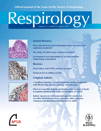Early onset pneumonia in patients with cholinesterase inhibitor poisoning
ABSTRACT
Background and objective: Organophosphates and carbamates are potent cholinesterase inhibitors that are widely used as insecticides in agriculture. Pneumonia is a frequent complication of cholinesterase inhibitor poisoning (CIP) and a risk factor for death. The aim of this retrospective study was to assess the risk factors for pneumonia in patients with CIP.
Methods: The medical records of 155 patients, who were treated for CIP in a 1300-bed medical centre in central Taiwan, from January 2002 to December 2004, were retrospectively analysed. Pneumonia was diagnosed by a new or persistent infiltrate on CXR, as well as clinical symptoms. Demographic data, comorbidities, acute respiratory failure and in-hospital mortality were also recorded.
Results: Of the 155 patients, 31 (20%) died and 92 (59.4%) developed acute respiratory failure. Thirty-four patients (21.9%) were diagnosed with early onset pneumonia during hospitalization. Acute respiratory failure (OR 12.10, 95% CI: 2.55–57.45), underlying cardiovascular disease (OR 3.02, 95% CI: 1.02–8.91), undergoing gastric lavage at peripheral hospitals (OR 6.23, 95% CI: 1.52–25.98) and development of respiratory failure at the study centre after gastric lavage (OR 3.43, 95% CI: 1.17–10.0) were predictive factors for early onset pneumonia. Cardiopulmonary resuscitation (OR 23.58, 95% CI: 6.03–92.29), early onset pneumonia (OR 7.45, 95% CI: 2.02–27.5) and lower Glasgow coma score (OR 1.26, 95% CI: 1.08–1.48) were predictive factors for mortality.
Conclusions: Pneumonia was a significant risk factor for death in patients with CIP. In addition to aggressive management of patients with CIP who develop respiratory failure, careful respiratory evaluation before and after gastric lavage would help to decrease the incidence of early onset pneumonia in patients with CIP.




